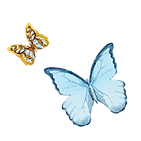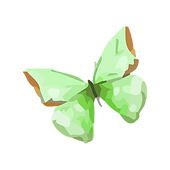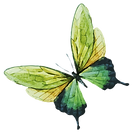Why comic books and animated shows?
- Eve

- Jul 3, 2017
- 6 min read
Explaining why you like comic books to someone who does not read comic books can be very difficult. Putting the enjoyment of it into words is the trickiest thing, partly because the experience of comic books is mostly visual. And, in my experience, you usually discover comic books by trying one out, not by having someone tell you why they are good. If you saw it and want to read it, you are a comic book person, whether you saw it on the library shelf or someone handed you a volume. (This is a generalization, I know, but it is based off of how I found comic books and how I give them to others.) We all have interests that are difficult to justify to people outside the activity. Golf, stamp collecting, historical fiction, fashion, cats, dogs, ferrets, floral arrangement, math, mountain climbing... I am not suggesting that reading comic books is as difficult as scaling Mount Everest. My point is that at some point you will have to tell someone why you do it, and try to make them believe you are not insane.

(Picture found on Google Images)
My experience with comic books is mainly within the frame of graphic novels, which are longer than a magazine-like edition of Superman and newspaper panels like Garfield. More specifically, I like the style of graphic novels that originated in Japan: manga. This word is pronounced "mahn-gah" and is written with the Chinese characters 漫画, which mean "unrestrained" and "picture." It is a fairly old type of reading material, going back before World War II. What we currently think of as manga was perfected by Osamu Tezuka, who wrote famous stories like AstroBoy (or Mighty Atom, 鉄腕アトム). He drew characters with big eyes, expressive faces, interesting hair and clothing styles, and put together complex dialogue and plot lines. His stories are generally regarded as classics.

(Picture found on Google Images)
In connection with manga is anime, which is pronounced "ah-nee-may" and comes from the word "animation." (In Japanese, many long English words are shortened to be easier to say.) This word represents the world of animated films and TV shows that developed based on the manga style of storytelling and artwork. That is not to say that a manga with unusual artwork or an anime with fairly realistic animations do not count, but there was a jumping off point for the genres. Like I mentioned before, the big eyes and hair are usually the best indicators, but you should think of these genres as a playground where sometimes the rules and conventions are broken. This is why I would say that manga and anime are as much art as they are books and television.

(Picture found on Google Images)
So, why do I like them? Back when I was twelve and in seventh grade, I was sitting at my desk waiting for math class to start. I really did not have any friends in that class, save for one boy who used to be my best friend years ago when we were little kids. He sat behind me, and I happened to notice he had a really interesting book with him. I will say that that boy was not really known for his reading skills, but he did read a lot of comic books. As it turned out, he read both American-made comics and Japanese-made manga. After pestering him a bit, I got to take a look at the book. The characters on the cover were a black-haired girl and a person with long white hair and strange ears. Please know that I love to read fantasy and science fiction, so I was immediately curious about the person with what looked like cat's ears. (They turned out to be dog ears, but that is not really important.) The book's title was Inu-Yasha, which was just about the weirdest word I had ever seen, and flipping through revealed pages and pages of illustrated panels. For a moment I was disappointed that it was not a real book, but my curiosity would not go away. I continued to pester the boy until he returned the book to the library a week later, at which time I dragged my younger sibling to the library to get it. We had never been out of the children's section in the basement, and were nervous when the desk lady took us to the young adult section on the main floor. Sitting on top of the shelf was as small, cardboard wrack of graphic novels, including the first two volumes of Inu-Yasha. (I later discovered that this was pronounced "ee-new-yah-shah" and means "dog warrior.") We checked the books out and went home so that I could read them immediately. It was instant love. The artwork was dramatic, the story was gripping, the Japanese culture and names were entirely alien, and basically I felt like a whole new world had been opened up to me. When the boy brought another book to school called Magic Knight Rayearth, I proceeded to pester him about that one as well, and eventually perused the graphic novel shelf on my own. Completely by accident, my sister and I graduated from the children's section to young adult.


(Pictures found on Google Images)
I had never been interested in other countries before. My favorite things were magical creatures, Barbie dolls, X-Men, and lizards. My dream was to grow up to be a writer or an artist, and add new, beautiful worlds to this mundane planet. As a little kid I had wanted to go to China where the clothes were rainbow colors and the waterfalls fell out of stone dragons' mouths, and that dream was abandoned when I found out how crowded and dirty China actually was. What manga did for me was show me that other countries have a lot to offer, culturally and intellectually. In my early years of reading manga, during which I read dozens and dozens of titles picked up from multiple libraries, I often got confused by parts of the stories because I forgot that most of them took place overseas. For example, in the manga called Mars there is a high school character who seems like a total slacker, but is actually very good at English due to living in Los Angeles while growing up. I assumed that this meant that Los Angeles had very well-spoken people and good English classes. When I got older, I realized that Mars takes place in Japan, where they have English classes but very few good English speakers. This perception change was an important part of my teenage growth, and set me on the path to wanting to spend time in Japan once I got into college. As an adult now, i can happily say that I fulfilled that dream, on top of traveling to a few other places.

(Picture found on Google Image)
As for anime, I found out that I had actually been watching it for years. Japanese animated TV shows made there way to America faster than graphic novels did, although they are both experiencing a fantastic boom now. (I am very relieved because translated and imported Japanese books can be very expensive. With them being more mainstream now, they are easier to find at better prices.) Channels like Cartoon Network have featured Sailor Moon, Yu-Gi-Oh!, Dragon Ball Z, Zatch Bell, One Piece, and many others for years. These are shows that started out as manga serials in magazines that became popular enough to be published in full volumes as books, and were eventually turned into animated TV shows. They were eventually picked up in America, translated, and dubbed over in English. Disney got involved in all this as well when they gained the rights to anime films produced by Studio Ghibli, which include Spirited Away, Ponyo, Castle in the Sky, and My Neighbor Totoro. These films are a good example of certain manga/anime rules being broken. The characters have normal hair and normal eyes, yet they are drawn in such a way that anime fans happily accept them into the fold.


(Pictures found on Google Images)
At this point, manga mostly refers to anything you would call a "graphic novel" and anime to any animation that you might not call a cartoon. The work of Junji Ito, a horror writer, has an unconventional style that looks nothing like the typical big-eyed look that most people associate with manga. Films by Satoshi Kon similarly portray people as human beings in illustration. Manga is a storytelling medium that uses visuals to fully convey what the writer imagined. There are so many levels of skill that go into making a good story that also has beautiful art, interesting dialogue, engaging layout, and good pacing. As with movies and books, there are styles that fit everyone's tastes, and some things become unbelievably popular while others are called cult classics. Anime brings a new life to an otherwise static medium. I believe that it is the variety and character that one sees in this genre that makes it so beloved.


(Pictures found on Google Images)





























Comments